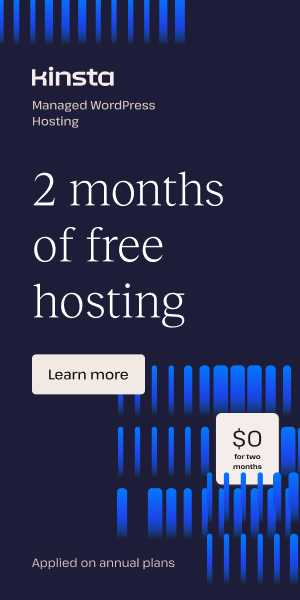Elementor Integration with Figma
Crafting Pixel-Perfect Websites with Seamless Design-to-Development Workflow
In today’s competitive digital landscape, a flawless transition from design to development is paramount for delivering stunning websites quickly and efficiently. Designers frequently rely on Figma for its intuitive interface and collaborative features, while developers favor Elementor as a powerful page builder WP tool that allows visually constructing WordPress websites with drag-and-drop ease. Bridging these two worlds via Elementor Figma integration streamlines your workflow, helps maintain design fidelity, and accelerates project delivery.
Why Integrate Figma with Elementor?
Figma’s popularity for UI/UX design stems from its cloud-based collaboration, vector precision, and component system, whereas Elementor is renowned for building modern, responsive WordPress sites without needing code. Integrating these platforms allows:
- Faithful design replication: Convert designs crafted in Figma into interactive Elementor pages with minimal visual compromises.
- Faster development cycles: Automate or semi-automate build processes, reducing manual coding and iteration time.
- Improved collaboration: Designers and developers work in their familiar environments with smoother hand-offs.
This interoperability is game-changing for agencies and freelancers targeting markets in the USA, UK, and Canada, where requirements for polished, responsive websites are stringent.
Understanding the Figma to Elementor Workflow
The process of converting a design from Figma into an Elementor-built WordPress site involves several critical phases:
- Preparation & Optimization of Design in Figma: Clean, well-structured files are essential. Utilize frames logically (e.g., hero, services, footer sections), name layers descriptively, and ensure consistent spacing and typography standards aligned with web accessibility guidelines.
- Exporting Design Assets: Export images and icons at 2x resolution in suitable formats like PNG, SVG, or JPG. Vector-based SVGs maintain crispness across various screen sizes and are supported by WordPress plugins enabling SVG handling.
- Conversion to Elementor-Compatible Format: Using tools such as the Figma2WP Service, or plugins like UiChemy or Figma To Elementor plugin, designers can generate JSON files encapsulating design structures or directly paste code snippets into Elementor.
- Import & Reconstruction in Elementor: Import exported JSON files or rebuild sections manually within Elementor’s drag-and-drop builder. This step often requires mapping Figma frames to Elementor containers, columns, and widgets to preserve layout hierarchy and responsiveness.
- Refinement & Responsiveness: Adjust typography, padding, and breakpoints to ensure optimal user experience across devices.
For those seeking more control, manual conversion guides provide comprehensive steps to rebuild Figma designs section by section within Elementor, emphasizing pixel-perfect precision.
Key Tools Facilitating Elementor and Figma Integration
Several plugins and services have emerged to simplify the design to Elementor transition, including:
- Figma2WP Service: A dedicated platform for converting Figma designs into clean, WordPress-ready code optimized for Elementor. It supports preserving design integrity, accessibility, and responsive layouts.
- Figma to Elementor Plugin: A plugin generating JSON data that can be pasted directly in Elementor, recognizing images and component groups intelligently to streamline conversion.
- UiChemy Figma Extension: Offers license-based automated exports from Figma into Elementor templates, supporting all major WordPress page builders.
These tools drastically reduce the friction designers and developers encounter, particularly when working on complex or multi-page projects.
Best Practices for Achieving High-Quality Figma to Elementor Conversion
Maximize your success rate and minimize post-export cleanup by adhering to the following:
- Maintain a clear and consistent naming convention for layers and components in Figma; this eases automatic parsing by conversion tools.
- Use Auto Layout in Figma where possible to promote flexible, responsive design structures that map naturally to web containers and grids.
- Optimize Images and Icons in vector formats like SVG to ensure scalability without loss of quality. Support for SVG uploads may require additional WordPress plugins such as SVG Support.
- Plan layout hierarchy meticulously so that sections in Figma correlate logically to Elementor columns, inner sections, and widgets.
- Review and set web-friendly typography in Figma, matching font sizes, weights, and line heights compatible with CSS standards.
- Test prototypes responsively before export to ensure seamless adaptation across screen sizes.
Resources like Elfsight’s detailed guide provide practical checklists and advice for setup and export to complement your workflow.
Real-World Applications and Success Stories
Top agencies and freelance web professionals have leveraged the synergy of Elementor Figma integration to deploy vibrant, dynamic websites faster than traditional hand-coding methods, including:
- Corporate Websites: Enterprises in North America have reduced design-to-launch time by over 40%, using services like Figma2WP to automate the build process while ensuring brand consistency.
- E-Commerce Stores: Online retailers increased conversion rates by 15% after rebuilding product pages with exact Figma layouts in Elementor, enhancing visual appeal and usability.
- Creative Agencies: Rapid prototyping followed by smooth Elementor integration enabled agencies to present interactive website demos more rapidly to clients in the UK and Canada.
These use cases illustrate how mastering the Figma to Elementor process elevates project scalability and development accuracy.
Advanced Tips for Designers and Developers
For those aiming to push boundaries, consider:
- Automating repeatable components: Use reusable Elementor widgets for headers, footers, and call-to-actions designed once in Figma and propagated throughout the project.
- Leveraging Elementor’s motion effects and interactions to enhance static Figma designs with real-time animations and transitions, increasing user engagement.
- Exploring third-party Elementor add-ons like The Plus Addons or Crocoblock to expand widget options corresponding to complex Figma elements.
- Integrating SEO and performance optimization plugins such as Yoast SEO or WP Rocket post-conversion to maximize site visibility and speed.
Taking Your Figma Designs to Life with Elementor Today
Bridging design to Elementor empowers designers and developers with unprecedented control and speed in WordPress site creation. With tools like Figma2WP, UiChemy, and various plugins facilitating this integration, transforming your static Figma prototypes into fully functional Elementor websites is easier than ever.
Whether you’re a freelancer targeting clients across the USA, UK, or Canada or an agency scaling up your web development pipeline, mastering this workflow is an invaluable skill. Ready to see your Figma designs shine as interactive, professionally built WordPress sites? Contact Us today to explore how our expertise can accelerate your projects and elevate your web presence.
More From Our Blog
Unlocking the Power of Hands-On Web Design with Modern Tools In today’s digital age, the ability to craft your own website has transformed from a daunting technical challenge into an engaging creative process accessible to enthusiasts, DIYers, and professionals alike. Services like Figma2WP Service empower you to convert your design concepts into fully functional WordPress Read more…
Elevate Your Outdoor Presence with Cutting-Edge Garden Themes for WordPress Creating a captivating online presence for gardening businesses or outdoor-focused sites demands a skilled blend of aesthetics, functionality, and thematic relevance. This is where garden themes for WordPress shine—offering visually rich, user-friendly templates tailored to beautifully showcase plants, gardening products, and outdoor lifestyles. With the Read more…


